
An android is a humanoid robot or other artificial being often made from a flesh-like material. Historically, androids were completely within the domain of science fiction and frequently seen in film and television, but advances in robot technology now allow the design of functional and realistic humanoid robots.
Grok is a neologism coined by American writer Robert A. Heinlein for his 1961 science fiction novel Stranger in a Strange Land. While the Oxford English Dictionary summarizes the meaning of grok as "to understand intuitively or by empathy, to establish rapport with" and "to empathize or communicate sympathetically (with); also, to experience enjoyment", Heinlein's concept is far more nuanced, with critic Istvan Csicsery-Ronay Jr. observing that "the book's major theme can be seen as an extended definition of the term." The concept of grok garnered significant critical scrutiny in the years after the book's initial publication. The term and aspects of the underlying concept have become part of communities such as computer science.
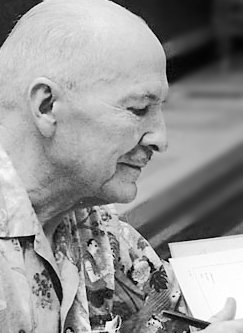
Robert Anson Heinlein was an American science fiction author, aeronautical engineer, and naval officer. Sometimes called the "dean of science fiction writers", he was among the first to emphasize scientific accuracy in his fiction, and was thus a pioneer of the subgenre of hard science fiction. His published works, both fiction and non-fiction, express admiration for competence and emphasize the value of critical thinking. His plots often posed provocative situations which challenged conventional social mores. His work continues to have an influence on the science-fiction genre, and on modern culture more generally.

The Rolling Stones is a 1952 science fiction novel by American writer Robert A. Heinlein.
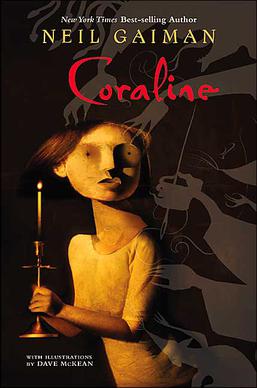
Coraline is a 2002 British dark fantasy horror children's novella by British author Neil Gaiman. Gaiman started writing Coraline in 1990, and it was published in 2002 by Bloomsbury and HarperCollins. It was awarded the 2003 Hugo Award for Best Novella, the 2003 Nebula Award for Best Novel, and the 2002 Bram Stoker Award for Best Work for Young Readers. The Guardian ranked Coraline #82 in its list of 100 Best Books of the 21st Century. It was adapted as a 2009 stop-motion animated film, directed by Henry Selick under the same name.

Contact is a 1985 hard science fiction novel by American scientist Carl Sagan. It deals with the theme of contact between humanity and a more technologically advanced extraterrestrial life form. It ranked No. 7 on the 1985 U.S. bestseller list. The only full work of fiction published by Sagan, the novel originated as a screenplay by Sagan and Ann Druyan in 1979; when development of the film stalled, Sagan decided to convert the stalled film into a novel. The film concept was subsequently revived and eventually released in 1997 as the film Contact starring Jodie Foster.

John Richard Hersey was an American writer and journalist. He is considered one of the earliest practitioners of the so-called New Journalism, in which storytelling techniques of fiction are adapted to non-fiction reportage. In 1999, Hiroshima, Hersey's account of the aftermath of the atomic bomb dropped on Hiroshima, Japan, was adjudged the finest work of American journalism of the 20th century by a 36-member panel associated with New York University's journalism department.
Mark Clifton (1906–1963) was an American science fiction writer, the co-winner of the second Hugo Award for best novel. He began publishing in May 1952 with the widely anthologized story "What Have I Done?".

Hiroshima is a 1946 book by American author John Hersey. It tells the stories of six survivors of the atomic bomb dropped on Hiroshima. It is regarded as one of the earliest examples of New Journalism, in which the story-telling techniques of fiction are adapted to non-fiction reporting.

Duncan Zowie Haywood Jones is a British film director, film producer and screenwriter. He directed the films Moon (2009), Source Code (2011), Warcraft (2016), and Mute (2018). For Moon, he won the BAFTA Award for Outstanding Debut by a British Writer, Director or Producer. He is the son of English singer-songwriter David Bowie and Cypriot-born American model, actress, and journalist Angie Bowie.
George Reginald Turner was an Australian writer and critic, best known for the science fiction novels written in the later part of his career. His first science fiction story and novel appeared in 1978, when he was in his early sixties. By this point, however, he had already achieved success as a mainstream novelist, including a Miles Franklin Award, and as a literary critic.
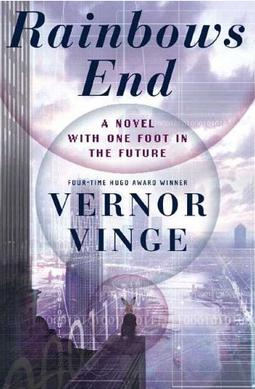
Rainbows End is a 2006 science fiction novel by Vernor Vinge. It was awarded the 2007 Hugo Award for Best Novel. The book is set in San Diego, California, in 2025, in a variation of the fictional world Vinge explored in his 2002 Hugo-winning novella "Fast Times at Fairmont High" and 2004's "Synthetic Serendipity". Vinge had tentative plans for a sequel, picking up some of the loose threads left at the end of the novel. The many technological advances depicted in the novel suggest that the world is undergoing ever-increasing change, following the technological singularity, a recurring subject in Vinge's fiction and nonfiction writing.
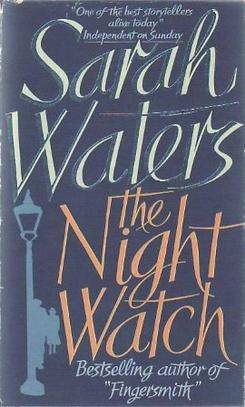
The Night Watch is a dark, 2006 historical fiction novel by Sarah Waters. It was shortlisted for both the 2006 Man Booker Prize and the 2006 Orange Prize. The novel, which is told backward through third-person narrative, takes place in 1940s London during and after World War II. The storyline follows the fragmented lives and the strange interconnections between Kay, Helen and Julia, three lesbians; Viv, a straight woman; and Duncan, her brother, whose sexuality is ambiguous. The war, with its never-ending night watches, serves as a horrifying backdrop and metaphor of the morbidity that surrounds life and love.

The Collected Stories of Philip K. Dick is a collection of 118 science fiction stories by American writer Philip K. Dick. It was first published by Underwood-Miller in 1987 as a five volume set. See Philip K. Dick bibliography for information about the mass market reprints.
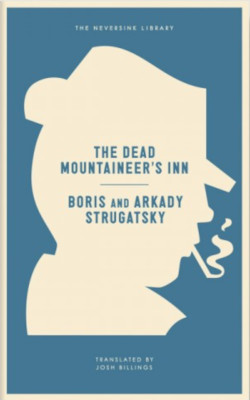
The Dead Mountaineer's Hotel is a 1970 Soviet science fiction novel written by brothers Arkady and Boris Strugatsky. In 2015, Melville House published an English translation by Josh Billings as part of their Neversink Library collection. The novel heavily incorporates elements of detective fiction as it follows Inspector Peter Glebsky as he attempts to solve a classic locked-room mystery. However, the novel subverts common mystery novel tropes, and flouts the second of Ronald Knox's "Ten Commandments" of the detective genre:
"All supernatural or preternatural agencies are ruled out as a matter of course."

Flowers for Algernon is a short story by American author Daniel Keyes, later expanded by him into a novel and subsequently adapted for film and other media. The short story, written in 1958 and first published in the April 1959 issue of The Magazine of Fantasy & Science Fiction, won the Hugo Award for Best Short Story in 1960. The novel was published in 1966 and was joint winner of that year's Nebula Award for Best Novel.
Henry James O'Brien Bedford-Jones was a Canadian-American historical, adventure fantasy, science fiction, crime and Western writer who became a naturalized United States citizen in 1908.
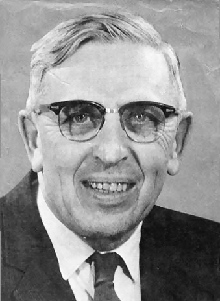
Clifford Donald Simak was an American science fiction writer. He won three Hugo Awards and one Nebula Award. The Science Fiction Writers of America made him its third SFWA Grand Master, and the Horror Writers Association made him one of three inaugural winners of the Bram Stoker Award for Lifetime Achievement. He is associated with the pastoral science fiction subgenre.

The Thrill Book was a U.S. pulp magazine published by Street & Smith in 1919. It was intended to carry "different" stories: this meant stories that were unusual or unclassifiable, which in practice often meant the stories were fantasy or science fiction. The first eight issues, edited by Harold Hersey, were a mixture of adventure and weird stories. Contributors included Greye La Spina, Charles Fulton Oursler, J. H. Coryell, and Seabury Quinn. Hersey was replaced by Ronald Oliphant with the July 1 issue, probably because Street & Smith were unhappy with his performance.

The Call is a novel published in 1985 by the American writer John Hersey. The novel, which is in the form of a fictionalized biography with letters and excerpts from Treadup's journal, presents the experience of David Treadup, an American Protestant missionary in China during the first half of the twentieth century. As the novel progresses, and China undergoes Japanese invasion and communist revolution, Treadup reconsiders whether his efforts to help China were useful and questions the usefulness of the Christian mission. Hersey based Treadup on a composite of six historical China missionaries, including his own father. Other historical figures appear, sometimes under their own names.
















